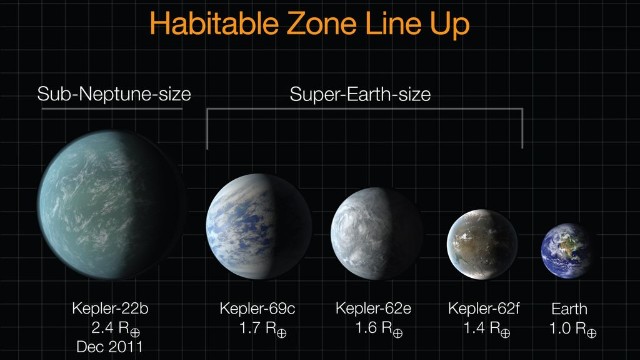
Photo from CNN
On the eve(ish) of Earth Day we receive news that scientists have found other earth like planets. Now that can be something scary to some, as the unknown can always be a cause of fear, but I think we should be excited that there is likely other life and perhaps opportunity to learn how to care for our planet better! While these new planets are not likely vacation destinations (as they are soooooo incredibly far away) I still love the idea of more 'earths'!
Read below:
CNN- Scientists announced Thursday the discovery of three planets that are some of the best candidates so far for habitable worlds outside our own solar system -- and they're very far away.
NASA's Kepler satellite, which is
keeping an eye on more than 150,000 stars in hopes of identifying Earth-like
planets, found the trio.
Two of the planets -- Kepler-62e
and Kepler-62f -- are described in a study released Thursday in the journal Science. They are part of a five-planet system in which the
candidates for life are the farthest from the host star.
The host star -- the equivalent
of Earth's sun -- takes the name Kepler-62, where the individual planets are
designated by letters thereafter.
A third planet that's potentially
habitable, but not included in the Science study, is called Kepler-69c. A study
about it and its system is published in The
Astrophysical Journal.
These are the smallest planets
ever found in the "habitable zone," the area near a star in which a planet can
theoretically hold liquid water. Kepler-69c seems less clearly in the habitable
zone than the other two planets, but scientists haven't ruled it out.
"With all of these discoveries
we're finding, Earth is looking less and less like a special place and more like
there's Earth-like things everywhere," said Thomas Barclay, Kepler scientist at
the Bay Area Environmental Research Institute in Sonoma, California.
You won't be swimming on the
planets anytime soon, though. The Kepler-62 star is 1,200 light-years away;
Kepler-69 is 2,700 light-years away. A light-year, the distance that light
travels in a vacuum in one year, is nearly 6 trillion miles.
To read more visit: http://www.cnn.com/2013/04/18/us/planet-discovery/index.html?hpt=hp_t3
No comments:
Post a Comment